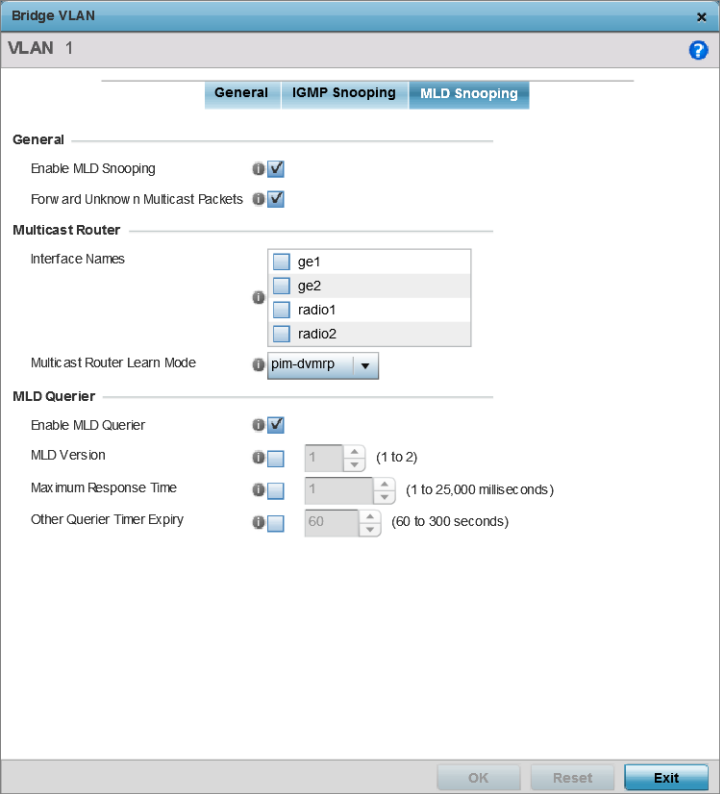Bridge VLAN MLD Snooping
About this task
MLD (Multicast Listener Discovery) snooping enables a controller, service platform or access point to examine MLD packets and make forwarding decisions based on content. MLD is used by IPv6 devices to discover devices wanting to receive multicast packets destined for specific multicast addresses. MLD uses multicast listener queries and multicast listener reports to identify which multicast addresses have listeners and join multicast groups.
MLD snooping caps the flooding of IPv6 multicast traffic on controller, service platform or access point VLANs. When enabled, MLD messages are examined between hosts and multicast routers and to discern which hosts are receiving multicast group traffic. The controller, service platform or access point then forwards multicast traffic only to those interfaces connected to interested receivers instead of flooding traffic to all interfaces.
To set the MLD Snooping parameters:




